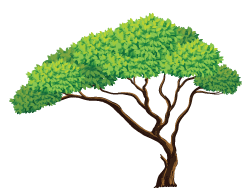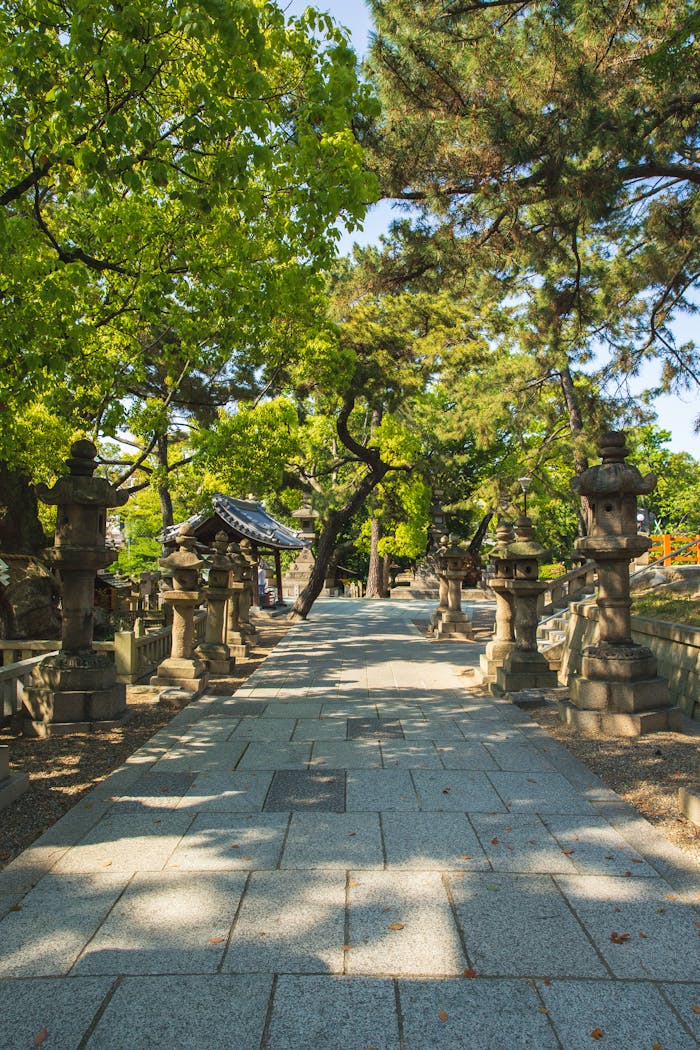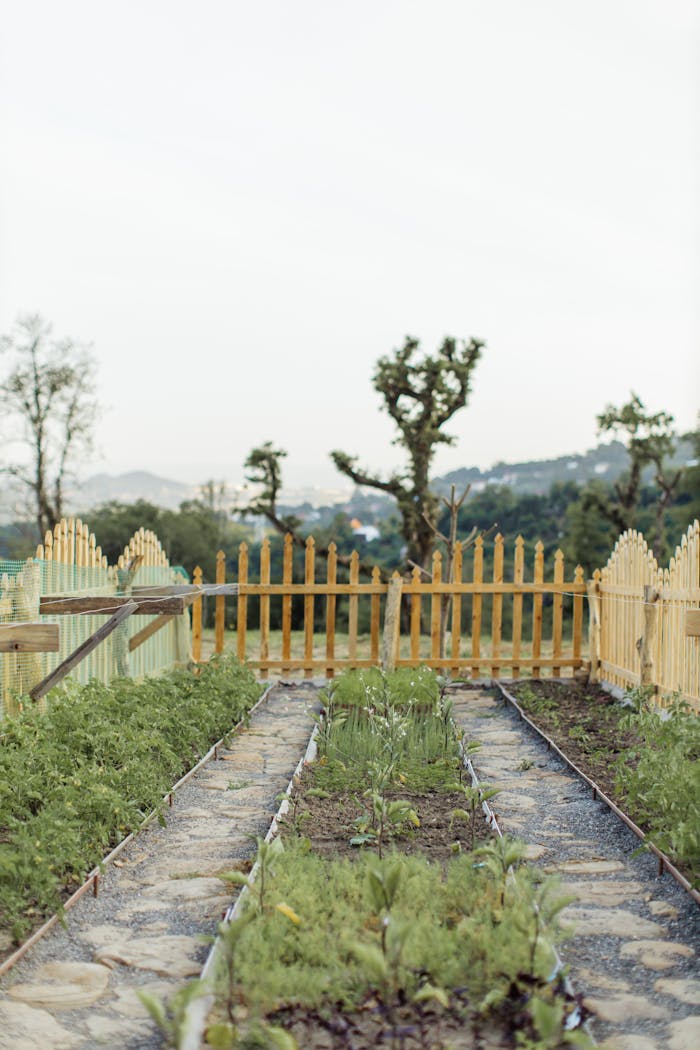Gardens in Queensland, Australia: A Tropical Paradise
Queensland, the second-largest state in Australia, is renowned for its diverse landscapes, from lush rainforests to arid outback regions. This variety in climate and terrain has given rise to a rich tapestry of gardens that capture the essence of the Sunshine State. From the tropical north to the subtropical southeast, Queensland’s gardens are a testament to the state’s natural beauty and the ingenuity of its gardeners.
In this article, we will explore the unique characteristics of Queensland’s gardens, delving into the various types that thrive in different regions of the state. We’ll journey through public gardens that showcase the best of Queensland’s flora, examine the use of native plants in landscaping, and discuss the challenges and opportunities that come with gardening in this part of Australia.
Queensland’s gardens are more than just beautiful spaces; they are living laboratories of biodiversity, showcasing the delicate balance between human cultivation and natural ecosystems. As we navigate through the world of Queensland gardens, we’ll uncover the ways in which gardeners are adapting to climate change, embracing sustainable practices, and creating green spaces that serve both aesthetic and ecological purposes.
Join us as we embark on a horticultural adventure through the Sunshine State, discovering the vibrant colors, unique plant species, and innovative garden designs that make Queensland’s gardens truly spectacular. Whether you’re a seasoned gardener, a nature enthusiast, or simply curious about the botanical wonders of this region, this exploration of Queensland’s gardens promises to be an enlightening and inspiring journey.
## Climate and Geography of Queensland
Understanding the climate and geography of Queensland is crucial to appreciating the diversity and challenges of gardening in this unique Australian state. Spanning over 1.7 million square kilometers, Queensland encompasses a wide range of climatic zones and landscapes, each presenting its own set of opportunities and constraints for garden enthusiasts.
### Tropical North
The far north of Queensland, including cities like Cairns and Port Douglas, experiences a tropical climate characterized by high temperatures and humidity year-round. This region receives abundant rainfall, particularly during the wet season from November to April. The tropical climate supports lush vegetation and allows for the cultivation of a wide variety of exotic plants, including orchids, palms, and tropical fruit trees.
### Subtropical Southeast
The southeast corner of Queensland, home to Brisbane and the Gold Coast, enjoys a subtropical climate. This region experiences warm, humid summers and mild, dry winters. The subtropical climate is ideal for a diverse range of plants, from native eucalypts to introduced species from similar climates around the world.
### Arid Interior
Moving inland, the climate becomes progressively drier, transitioning to arid and semi-arid conditions in the state’s interior. Towns like Longreach and Mount Isa experience hot summers and cool winters, with minimal rainfall throughout the year. Gardening in these regions requires careful water management and selection of drought-tolerant plants.
### Coastal Areas
Queensland’s extensive coastline influences the climate of adjacent regions, moderating temperatures and increasing humidity. Coastal gardens benefit from sea breezes but must contend with salt spray and occasional extreme weather events like cyclones.
### Great Barrier Reef
The presence of the Great Barrier Reef along Queensland’s northeastern coast not only impacts the marine ecosystem but also influences the coastal climate, contributing to the region’s high biodiversity and unique gardening conditions.
This diverse geography and climate create a mosaic of gardening opportunities across the state. From rainforest-inspired gardens in the north to water-wise xeriscape gardens in the interior, Queensland’s gardeners have adapted their techniques and plant selections to suit local conditions, resulting in a rich and varied horticultural landscape.
## Types of Gardens in Queensland
The diverse climate and geography of Queensland have given rise to a variety of garden types, each adapted to its specific environmental conditions. Let’s explore the main types of gardens found across the state:
### Tropical Gardens
Tropical gardens are a hallmark of North Queensland, particularly in areas like Cairns, Port Douglas, and the Daintree region. These gardens are characterized by:
– Lush, layered vegetation mimicking the structure of tropical rainforests
– A diverse mix of plants with large, glossy leaves and vibrant flowers
– Emphasis on creating a cool, shaded environment
– Incorporation of water features to increase humidity and create a tranquil atmosphere
– Popular plants include palms, ferns, bromeliads, heliconias, and gingers
Tropical gardens often blur the lines between indoor and outdoor spaces, with covered patios and verandahs serving as transitions between home and garden. The high rainfall in these regions allows for the cultivation of water-loving plants and creates opportunities for dramatic, naturalistic landscapes.
### Subtropical Gardens
Subtropical gardens are prevalent in Southeast Queensland, including Brisbane and the Gold Coast. These gardens blend elements of tropical and temperate designs:
– A mix of evergreen and deciduous plants
– Incorporation of both native and exotic species
– Use of subtropical fruit trees like citrus, avocado, and mango
– Emphasis on creating outdoor living spaces
– Popular plants include frangipani, hibiscus, bird of paradise, and native lilly pillies
Subtropical gardens often feature pergolas and arbors to provide shade during hot summers while allowing winter sun to penetrate. The mild climate allows for a wide range of plant choices, making these gardens some of the most diverse and colorful in Queensland.
### Arid Gardens
In the drier inland regions of Queensland, arid gardens have developed as a response to the challenging climate:
– Focus on water-wise landscaping and xeriscaping principles
– Use of native drought-tolerant plants and succulents
– Incorporation of hardscaping elements like rocks and gravel
– Minimal lawn areas to reduce water consumption
– Popular plants include spinifex, saltbush, acacias, and various eucalyptus species
Arid gardens often employ clever design techniques to create microclimates, such as using structures or larger plants to provide shade for more delicate species. Mulching is extensively used to conserve soil moisture and reduce evaporation.
### Coastal Gardens
Queensland’s extensive coastline has given rise to a unique style of coastal gardens:
– Plants selected for their tolerance to salt spray and wind
– Use of native coastal species like banksias, grevilleas, and coastal rosemary
– Incorporation of sand, shells, and driftwood in landscaping
– Designs that frame and enhance ocean views
– Popular plants include pandanus, coastal sheoak, and pigface
Coastal gardens often feature raised beds and mounds to improve drainage in sandy soils. Wind-breaking structures or plantings are common to protect more sensitive plants and create comfortable outdoor living areas.
Each of these garden types reflects the ingenuity and adaptability of Queensland’s gardeners, who have learned to work with their local climate and conditions to create beautiful, sustainable landscapes. As we’ll see in later sections, many gardens in Queensland incorporate elements from multiple styles, creating unique hybrid designs that capture the essence of this diverse state.
## Notable Public Gardens in Queensland
Queensland boasts an impressive array of public gardens that showcase the state’s horticultural diversity and provide inspiration for home gardeners. These gardens serve as living museums, educational resources, and peaceful retreats for locals and tourists alike. Let’s explore some of the most notable public gardens across the state:
### Brisbane Botanic Gardens, Mount Coot-tha
Located just outside Brisbane’s city center, these gardens cover 56 hectares and feature:
– A diverse collection of Australian native plants
– Themed gardens including a Japanese garden and an arid zone
– The Sir Thomas Brisbane Planetarium
– A tropical dome showcasing plants from rainforest environments
– Educational programs and guided walks
The Mount Coot-tha gardens are particularly noted for their focus on conservation and their extensive collection of native and exotic plants suited to subtropical climates.
### Roma Street Parkland, Brisbane
This 16-hectare park in the heart of Brisbane is known for its:
– Spectacular subtropical plantings
– Formal gardens with seasonal flower displays
– A fern gully and rainforest area
– Lake Precinct with water features and wetland plants
– Regular horticultural workshops and guided tours
Roma Street Parkland is often referred to as “Brisbane’s urban paradise” and serves as an excellent example of how green spaces can be integrated into city landscapes.
### Cairns Botanic Gardens
Situated in tropical North Queensland, these gardens showcase:
– An extensive collection of tropical plants from around the world
– The Flecker Garden, featuring plants from the Wet Tropics World Heritage Area
– A Gondwanan Evolution garden, highlighting ancient plant lineages
– The Watkins Munro Martin Conservatory, housing rare and endangered plants
– Aboriginal and Torres Strait Islander plant-use gardens
The Cairns Botanic Gardens are particularly valuable for their focus on conservation of tropical ecosystems and their educational programs on traditional plant use.
### Bundaberg Botanic Gardens
These gardens in the Wide Bay-Burnett region feature:
– A diverse collection of native and exotic plants
– The Hinkler Hall of Aviation, celebrating pioneer aviator Bert Hinkler
– A series of lakes and lagoons supporting local wildlife
– The Bundaberg and District Historical Museum
– A miniature steam train that runs through the gardens
The Bundaberg Botanic Gardens blend horticultural displays with cultural and historical attractions, making them a multifaceted destination.
### Gold Coast Regional Botanic Gardens
Established in 2003, these young but rapidly developing gardens include:
– A native butterfly garden
– A sensory garden designed for visitors with disabilities
– A diversity of ecosystems from coastal heath to rainforest
– A children’s playground integrated with natural elements
– Regular markets, workshops, and community events
The Gold Coast Regional Botanic Gardens emphasize community engagement and education, with a strong focus on local ecosystems and sustainable gardening practices.
### Townsville Palmetum
Specializing in palms, this unique botanic garden features:
– One of the largest public collections of palms in the world
– A rainforest gully with a waterfall and stream
– A savanna garden showcasing dry-climate palms
– A grand avenue of Royal Palms
– Educational displays on palm ecology and conservation
The Townsville Palmetum is not only a beautiful garden but also an important center for palm research and conservation.
These public gardens serve multiple purposes in Queensland’s horticultural landscape. They act as living laboratories for plant research and conservation, provide educational resources for students and gardening enthusiasts, and offer serene spaces for relaxation and recreation. Moreover, they play a crucial role in demonstrating best practices in garden design and plant selection for Queensland’s varied climates, inspiring visitors to apply these principles in their own gardens.
By showcasing both native and exotic species, these gardens also highlight the incredible plant diversity that can thrive in Queensland’s different regions. They serve as important reminders of the state’s unique ecosystems and the need to preserve and celebrate Queensland’s natural heritage through thoughtful and sustainable gardening practices.
## Native Plants in Queensland Gardens
The use of native plants in Queensland gardens has gained significant popularity in recent years, driven by a growing awareness of their ecological benefits and their natural adaptation to local conditions. Native plants offer numerous advantages for gardeners in Queensland, including:
1. Water efficiency: Many native plants have evolved to thrive in Queensland’s varied climate conditions and are naturally drought-tolerant.
2. Low maintenance: Once established, native plants often require less care and fertilizer than exotic species.
3. Wildlife support: Native plants provide food and habitat for local birds, insects, and other wildlife.
4. Sense of place: Using native plants helps to create gardens that reflect Queensland’s unique natural heritage.
Let’s explore some of the most popular and versatile native plants used in Queensland gardens:
### Trees
1. Bottlebrush (Callistemon species): Known for their distinctive brush-like flowers, bottlebrushes are hardy trees that attract nectar-feeding birds.
2. Lilly Pilly (Syzygium species): These versatile trees can be used as hedges, screens, or specimen plants, and produce edible berries.
3. Silky Oak (Grevillea robusta): A fast-growing tree with striking orange flowers, suitable for larger gardens.
4. Queensland Bottle Tree (Brachychiton rupestris): An iconic outback tree with a distinctive bottle-shaped trunk, perfect for arid garden designs.
### Shrubs
1. Banksia: With their iconic flower spikes, banksias are excellent for attracting wildlife and come in various sizes suitable for different garden spaces.
2. Grevillea: These plants offer a wide range of sizes and flower colors, making them versatile choices for many garden styles.
3. Coastal Rosemary (Westringia fruticosa): A hardy shrub with fine foliage, ideal for coastal gardens or hedging.
4. Native Hibiscus (Alyogyne huegelii): Featuring large, showy flowers, this shrub adds a tropical touch to gardens.
### Groundcovers and Small Plants
1. Kangaroo Paw (Anigozanthos species): With their unique flower structure, these plants add texture and color to garden beds.
2. Native Violets (Viola hederacea): A low-growing plant that forms a dense mat, ideal for shaded areas or as a lawn alternative.
3. Blue Flax Lily (Dianella caerulea): A tough, grass-like plant with blue flowers and berries, excellent for mass planting or borders.
4. Pig Face (Carpobrotus glaucescens): A succulent groundcover with bright pink flowers, perfect for coastal or arid gardens.
### Climbers
1. Native Jasmine (Pandorea jasminoides): A vigorous climber with fragrant, trumpet-shaped flowers.
2. Wonga Wonga Vine (Pandorea pandorana): A fast-growing climber suitable for covering fences or pergolas.
### Grasses and Sedges
1. Lomandra: These tough, grass-like plants are excellent for mass planting and erosion control.
2. Kangaroo Grass (Themeda triandra): An attractive native grass that adds movement and texture to gardens.
Incorporating native plants into Queensland gardens doesn’t mean creating a wild, unstructured space. Native plants can be used in a variety of garden styles, from formal layouts to naturalistic designs. Here are some tips for effectively using native plants in garden design:
1. Mix textures and forms: Combine plants with different leaf shapes and sizes to create visual interest.
2. Create layers: Use a combination of trees, shrubs, and groundcovers to mimic natural ecosystems.
3. Group plants with similar needs: Place plants with similar water and sunlight requirements together for easier maintenance.
4. Use repetition: Repeat key plants throughout the garden to create a sense of cohesion.
5. Incorporate non-plant elements: Use rocks, logs, and water features to complement native plantings and create habitat for wildlife.
By choosing native plants suited to their specific region within Queensland, gardeners can create beautiful, low-maintenance landscapes that celebrate the state’s natural beauty and support local ecosystems. As climate change continues to impact gardening practices, the use of well-adapted native species is likely to become even more important in creating resilient and sustainable gardens across Queensland.
## Challenges of Gardening in Queensland
While Queensland’s diverse climate and rich biodiversity offer many opportunities for gardeners, they also present unique challenges. Understanding and addressing these challenges is crucial for creating and maintaining successful gardens across the state.
### 1. Extreme Weather Events
Queensland is prone to various extreme weather events that can significantly impact gardens:
– Cyclones: The tropical north is vulnerable to cyclones, which can cause extensive damage to plants and garden structures.
– Floods: Many areas of Queensland experience periodic flooding, which can lead to soil erosion and plant loss.
– Droughts: Extended dry periods can stress plants and make water management difficult.
– Heat waves: Extreme heat can cause plant stress, sunburn, and increased water demand.
Strategies to address these challenges include:
– Selecting wind-resistant plants for cyclone-prone areas
– Improving drainage in flood-prone gardens
– Implementing water-wise gardening techniques for drought periods
– Providing shade and mulch to protect plants during heat waves
### 2. Pest and Disease Management
Queensland’s warm climate is conducive to a variety of pests and diseases:
– Insects: Common pests include fruit flies, aphids, and various caterpillars.
– Fungi: Humid conditions can promote fungal diseases like powdery mildew and root rot.
– Weeds: Fast-growing weeds can quickly overtake gardens, especially in tropical regions.
To manage these issues, gardeners can:
– Implement integrated pest management strategies
– Choose disease-resistant plant varieties
– Practice good garden hygiene to prevent the spread of diseases
– Use mulch to suppress weed growth
### 3. Soil Conditions
Queensland’s soils vary widely across the state, presenting different challenges:
– Sandy soils in coastal areas: These soils drain quickly and may lack nutrients.
– Clay soils in some inland regions: These can become waterlogged and are difficult for roots to penetrate.
– Acidic soils in high-rainfall areas: These may require adjustment for certain plants to thrive.
Soil improvement strategies include:
– Adding organic matter to improve soil structure and nutrient content
– Using raised beds or mounds to improve drainage in clay soils
– Adjusting soil pH with lime or sulfur



